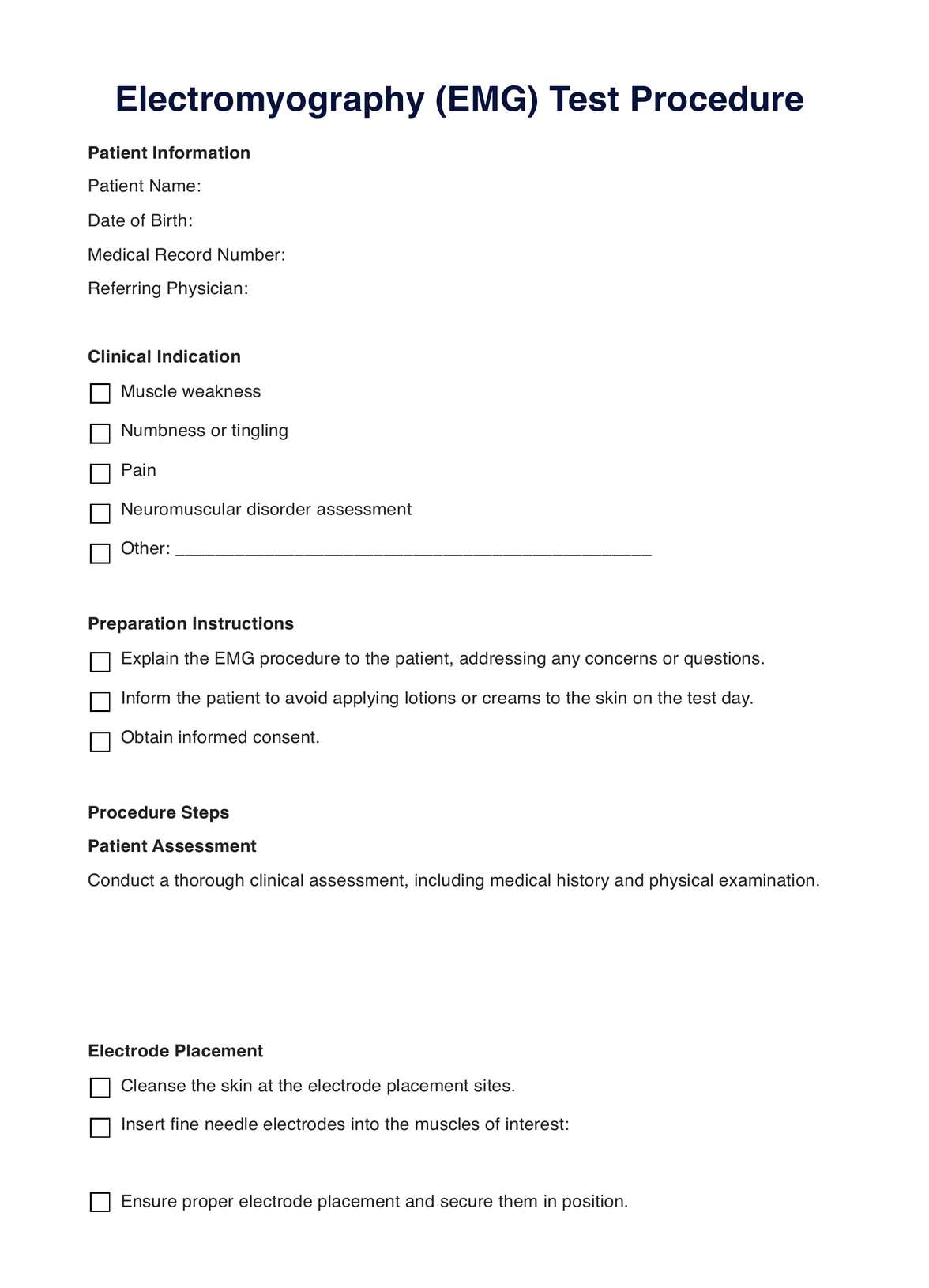Electromyography (EMG) tests are typically requested by healthcare professionals, such as neurologists, orthopedic surgeons, and physiatrists, to assess neuromuscular and nerve function.

Electromyography
Discover the power of Electromyography (EMG) tests! Explore their many uses and learn how to interpret results with confidence.
Use Template
Electromyography Template
Commonly asked questions
EMG tests are used to evaluate muscle and nerve function, diagnose neuromuscular disorders, identify nerve compression or damage, and assess a wide range of conditions causing muscle weakness, pain, or numbness.
EMG tests involve inserting fine needle electrodes into specific muscles to record electrical activity during muscle contractions. This data helps diagnose neuromuscular and musculoskeletal conditions.
EHR and practice management software
Get started for free
*No credit card required
Free
$0/usd
Unlimited clients
Telehealth
1GB of storage
Client portal text
Automated billing and online payments











